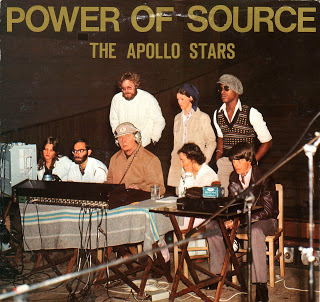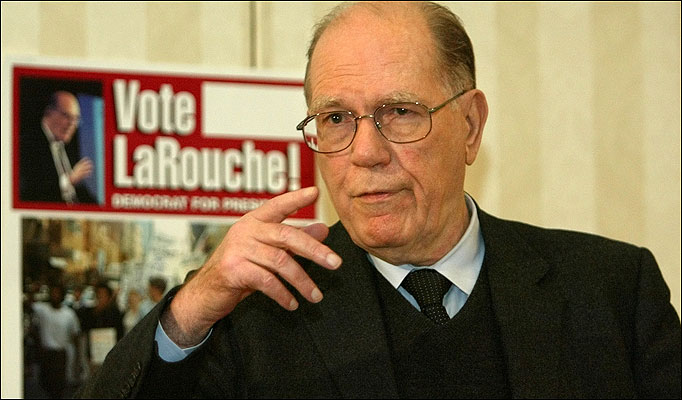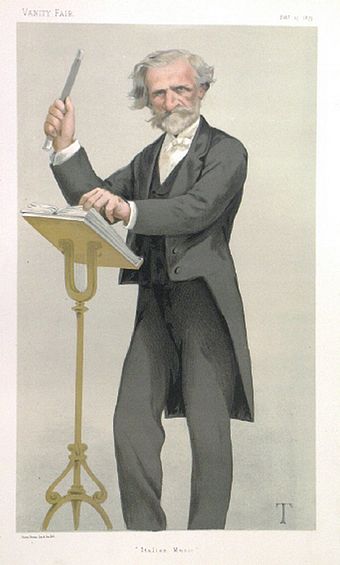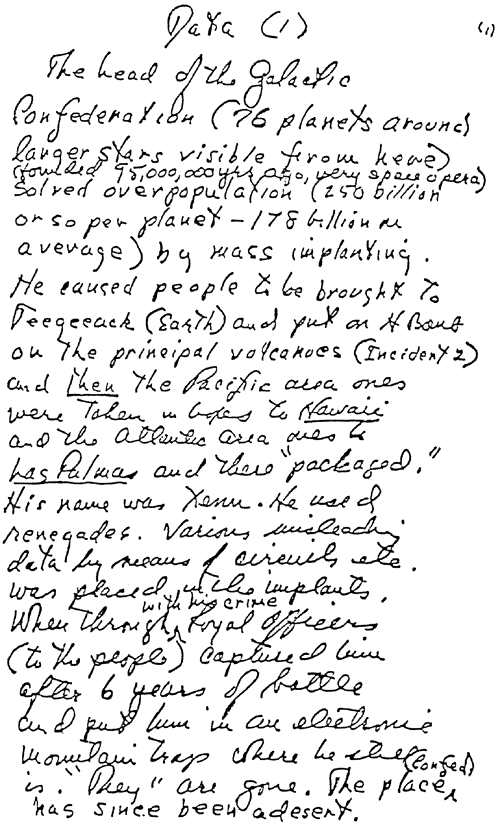Today, we’ll take a look at how paranoid, far-right fringe political cult leader Lyndon LaRouche attempted to intimidate the musical world into redefining one of the fundamental aspects of musical physics. In some sense, LaRouche’s efforts are similar to what Scientology founder L. Ron Hubbard did when attempting to reinvent the sound recording process as part of his own aesthetic theory.
The two stories are good for a few laughs. But ultimately, the moral of the story is quite serious. First, cults behave like totalitarian states in their attempts to control artistic and creative expression. Second, these examples remind us that cults are able to get their followers to believe strange things and to engage in quixotic quests that accomplish little save stroking the egos and lining the wallets of power-mad cult leaders. Scientology is far from alone in this regard, and combining our experience in Scientology’s ability to get members to do bizarre things with what we learn about similarities between cults can help the cult awareness community to help people more generally in the future.
It would be extraordinarily surprising if a large number of other cultic groups did not attempt to redefine the very foundation of what it means for something to be art. While not all cults do so, we would suggest that the severity by which any group attempts to restrict its members from experiencing certain types of art or where it attempts to reinvent aesthetics is directly correlated with the level of cultic involvement it tries to get from readers.

About Lyndon LaRouche and His Groups
I haven’t researched paranoid political cult leader Lyndon LaRouche and his groups more than casually over the last few years, so a large part of this section is summarized from his Wikipedia entry. If you read the Wikipedia article, note that it is relatively mild in tone and treads gently in discussing the cultic aspects of his organization, which controls members’ lives to a degree consistent with other heavy-duty cultic groups. I recall someone who posted several years ago under the handle of “Cultwife” on Tony Ortega’s blog, who lost her husband years before to LaRouche; her personal narrative is consistent with the experiences of other former LaRouche followers.

Lyndon LaRouche is a political gadfly who over a 60-plus year period has created a number of political organizations to espouse various economic and governmental theories that are fairly far out on the fringe. Originally, his views were hardcore far-left socialism but he rapidly shifted to ultra-right lunacy by the late 1960s. Much of his material is paranoid economic and political theories that are easily debunked by people with only minimal education in economics or who consume reputable news. He also has a number of bizarre scientific notions that have driven him to create front groups ostensibly to advance science-related causes such as spending on development of fusion energy.
At his height, LaRouche organizations had perhaps 10,000 active members and over 100,000 subscribers to several magazines the groups published. Various estimates suggest that LaRouche has perhaps 1,000 to 2,000 followers globally today. The most dedicated followers live in decrepit group housing and work long hours soliciting donations, recruiting members, and waiting on leadership.
In the early 1970s, LaRouche began to publish “intelligence reports” with his views on world events; he used followers from around the world to collect and forward news articles to him, which he would then editorialize on, typically attempting to fit the news into one of his conspiracy theories. LaRouche started to use this newsgathering organization to attempt to approach and influence politicians, including attempting to offer “data” to the CIA and NSA on groups that LaRouche thought were enemies of the US. LaRouche and various followers were able to meet with senior officials in the Reagan Administration on several occasions, until these meetings were revealed in the press.
LaRouche’s intelligence analysis is, of course, not unlike what Hubbard was doing at the same time, in the “Orders of the Day” issued when he was aboard the Apollo and the rest of the motley Mediterranean flotilla, where he took a news clipping and provided “special insight” into current events, with a heavily conspiratorial bent. There’s no way to know whether Hubbard and LaRouche influenced each other in this respect, because they were both already paranoid and possessed by delusions of grandeur, dreaming of taking over governments (Hubbard’s follies in trying to take over Rhodesia, Malawi and other places are well known, and LaRouche frequently ran for president of the US as a fringe candidate). It’s ultimately irrelevant whether one influenced the other, because people indoctrinated into the cult milieu seem to gravitate towards conspiracist thinking naturally; it doesn’t appear that cult leaders need to be taught explicitly to include this in their thought reform programs.
Essentially, LaRouche is the founder of a political cult that is in many ways the equal of Scientology in organizational complexity and in the depth of the mindfuck that members suffer, though it has not been as successful in attracting members over its life, and its available cash is less. However, the relative quiet of the LaRouche groups in the last few years could be an asset, since their brand name is not as toxic in the broad reach of society as Scientology’s is today.
“Scientific Pitch”
In days of yore, there was no universal standard for what frequency would anchor a given system of musical notation. One note anchors a particular tuning, and all other notes are derived from the frequency of the note that the pitch scale was based on. Each conductor used what felt best to them. While variations were not extreme, they were enough to change the “brightness” of the sound significantly. Over time, the musical world settled on one of a few pitch standards. The nearly universally used standard today is the “A440” standard, where the A above Middle C oscillates at 440 Hz.
In the 18th century, a physicist proposed a standard now called “scientific pitch,” where the frequency of the Middle C note was defined as precisely 256 Hz – Middle C in the A440 standard works out to be 261.62 Hz. The difference would presumably be extremely noticeable to musicians, perhaps not in a good way. But the idea of 256 Hz as a defining frequency for music had appeal to mathematicians and physicists, including Joseph Sauveur, the inventor of the scientific pitch idea. That’s because 256 is an exact power of two, and thus a table of frequencies in octaves would be very tidy when written out, since all C notes would also be an even power of two. The idea of regularizing measurement systems and “tidying them up” was well under way in Europe at the time, and would culminate much later in the 18th century with the development of the Metric system.

Unsurprisingly, Sauveur’s attempt to impose arbitrary order on the musical community was not a hit and it fell by the wayside, apart from occasional attempts to revive it, for nearly 250 years. Perhaps the only notable attempt to drive scientific pitch was by legendary operatic composer Giuseppe Verdi in the late 19th century who advocated the idea briefly, though even a composer of his stature was unable to interest the broader musical community. Scientific pitch would remain relegated to obscurity after Verdi for a century, when it garnered an unlikely advocate.
LaRouche’s Activism on Behalf of Scientific Pitch: From Odd to Cultic

In the 1980s, Lyndon LaRouche’s wife created an organization in Germany called the Schiller Institute. This was created to advance the philosophy of Friedrich Schiller, an important German playwright who also wrote extensively on the philosophy of aesthetics, among other things. Schiller also pursued musical adaptations of his works, with both Beethoven and Brahms writing scores to set his poems to music. The final movement of Beethoven’s 9th Symphony is one score for Schiller’s poetry, and Schubert scored 44 different Schiller poems. Verdi, who tried to promote C256 tuning, was also a fan of Schiller’s musical work, incidentally.
I haven’t taken the time to try to find out why Schiller’s ideas were so compelling that an advocacy group was needed two centuries after his death. It may simply be that LaRouche’s German-born second wife, who he married in 1977, was interested in the playwright’s work, so LaRouche funded her passion. He wouldn’t be the first rich husband in history to fund his wife’s vanity business.
The Schiller Institute is not exactly a roaring success of late; its 2015 IRS Form 990 reveals income of $37,617 and expenses of $80,175. And its focus appears to have wandered from the questions of aesthetics that its namesake grappled with. It’s been involved in speaking up for maglev trains and climate change, advocating against Clinton-era special prosecutor Kenneth Starr, and a mishmash of other causes.
It’s unclear whether Schiller himself advocated for use of scientific pitch, so I’m not readily able to discern why LaRouche’s Schiller Institute felt it so necessary to champion such an obscure and discredited issue. Yet champion it they did.
The Schiller Institute continues to hold conferences advocating for the scientific pitch idea. Merely wasting time holding meetings that few attend to advocate for a theory nobody cares about is not inherently cultic or bizarre. But several actions that the Schiller Institute took to advance the cause of scientific pitch most definitely are both cultic and bizarre.
Most amusingly, the institute actually lobbied for a bill in Italy that would essentially criminalize possession of A440 tuning forks and would require performance of state-sponsored groups to be in the C256 tuning that it backs. Obviously, such a measure to mandate particular artistic techniques would never get serious consideration in most countries. I can’t find a record of whether such legislation was ever actually introduced into the Italian parliament or merely suggested by LaRouchies. We think such doomed initiatives serve an important purpose in cultic groups: giving members an impossible task, which causes them to doubt themselves more and thus to become more dependent on cult leadership and teachings for reassurance.
LaRouche followers were also reportedly dispatched to concert halls with posters demanding the banning of the music of Vivaldi (presumably because he opposed scientific tuning), and leafletting a concert conducted by Leonard Slatkin claiming that “Slatkin Serves Satan.” Any connection between Slatkin and scientific tuning eludes our research. The derision that LaRouche followers felt when mocked while advocating this ludicrous cause is exactly what cult leaders can use to show followers that the world is a hostile place, again reinforcing the message that the cult is their only source of security.
And other followers have attempted to frame the classical music community’s rejection of C256 tuning as a conspiracy theory, something deeper and more sinister than a theory that has simply been ignored because it’s irrelevant and unworkable. And, of course, LaRouche is perhaps the king of conspiracy theories among old-line cult groups. Conspiracist thinking is of course rife among many cultic groups because it reinforces the idea that the group has special mystical knowledge only available to a select group of elites who have mastered arcane teachings to achieve clarity that the vast majority of benighted humanity will never see.
Finally, LaRouche claimed that the A440 tuning is actually hazardous to life and limb. One article reports various claims including:
- 432 Hz resonates with the Heart Chakra, repairs DNA and restores both spiritual and mental health.
- 440 Hz music was good at making people work harder and fostered personality traits desirable in the Third Reich.
- 440 Hz is unnatural and creates subtle disharmony to the listeners.
- When the two frequencies are examined in Cymatics experiments, the patterns show that 432 Hz creates distinct shapes which indicate that they resonate with nature. The 440 Hz tuning creates indistinct patterns revealing a lack of coherence.
- 440 Hz causes psychotic symptoms, paranoia and anxiety.
These unhinged claims about A440 sound virtually identical to the claims that Hubbard makes about “the psychs,” who he attributes all the world’s ills to, including Nazism. Clearly, when framing the discussion this way, there’s little about musical merit and everything to do with relating to accomplishing cultic purposes.
Hubbard’s Musical Maunderings
For this discussion, we’ll ignore Hubbard’s attempt to showcase his own pedestrian musical talent. It’s important to focus on how he used the Scientology organization to attempt to redefine how music is created.

Various eyewitness accounts have shown how Hubbard took talented musicians and made a laughingstock of their musical talents by imposing his typical anti-expert theories on the project. His idea, that the experts were basically grifting off honest record producers by making the process of recording engineering more complex than necessary, would be solved by simply setting the volume sliders on the mixing console to the middle of the range, and the resulting product would be the most natural sounding record imaginable, capturing every detail of the performances of the geniuses that “Source” personally conducted. The problem is that it takes a lot of effort, skill and creativity behind the scenes to make music sound “natural.” It’s like how Dolly Parton famously says about her clothes, “it costs a lot of money to look this cheap.”
Of course, the resultant product, “The Power of Source” by the “Apollo Stars,” was a complete and utter disaster musically and commercially, wiping out the significant investment in not only time and talent, but also the cash forked out to set up the “Source Records” label, the “Source Music” publishing company and to hire a bunch of Scientologists to run around and try to convince legit industry players to deal with Hubbard. The Sea Org members dragooned into this exercise were allowed to dress cool, grow their hair, and channel their music industry experience from all those past lives on the whole track as training to shoulder aside Capitol, A&M and all the rest.

The album cover photo above shows that the participants in this recording project, including Hubbard, are excited about their role in musical history. You can share in their joy, as the resultant musical brilliance is available on YouTube for the massively masochistic to “enjoy.”
While Hubbard didn’t pursue legislation to try to mandate acceptance of “Clear Sound,” he certainly spent hugely to try to drive its use. The laughably bad end product was easily ignored by indoctrinated cult followers who were able to engage in enough thought-stopping that they didn’t wonder how their brilliant leader was able to produce such a steaming turd of ineptitude. And the derisive reaction from the broader world, particularly from those who actually understood recording technology, provided grist for the mill of scaring members about the evils of the outside world and boosting dependence on the cult.
But Hubbard’s actual attempt to reinvent recording techniques was driven by his own totalitarian musical ideology. In the early days of Scientology, Hubbard was just as interested in controlling artistic expression as LaRouche was. His “Art Series,” a series of Hubbard Communications Office Bulletins (HCOBs) appeared starting in the mid-1960s. In them, Hubbard defines his philosophy of art. Hubbard’s assertions that art was fundamentally a form of communication ensured that Scientology-approved art would inevitably be restricted to literalist expression, not unlike the Soviet propaganda posters. Art embodying creation for its own sake was verboten. LaRouche didn’t actually try to put his musical theories into practice (though the Schiller institute did hire performers to put on works using C256 tuning on several occasions), so we’re not blessed with an enduring comic legacy when we listen to his creations. But Hubbard’s insipid creative efforts obscure a very real attempt to define art in the service of Scientology, and to restrict what members are allowed to create, making him as totalitarian as LaRouche.
Oh, And There’s Another Cult Leader Who Tried to Redefine Art…
I normally wouldn’t want to risk committing a major Godwin’s Law violation by pointing the following out, but it is worth noting that Hitler tried to redefine art as a means for trying to suppress dissident thoughts from his population. Hitler labeled much abstract art as “degenerate” and not only suppressed the works, but also persecuted the artists, damaging many careers. The propaganda that replaced it was an attempt to enforce focus on the goals of the regime, and to make an example of a small group to show the value of going along with the regime. Much has been written elsewhere, but it’s worth noting that this was a key means for controlling the population in the early days of Nazi rule.
This regulation of art was not restricted to Nazis; plenty of other totalitarian states subsumed creativity to the interests of the state. Consider Soviet-era propaganda posters, which took some of the country’s most talented painters and turned them into party hacks turning out nonsense. And, of course, the North Koreans continue to do this today, as one facet of controlling artistic expression on a broad scale.

The Moral of the Story
I’ve only highlighted two examples of cults attempting to create a new definition of art, and to impose that definition on the rest of the world. To those of us who were never in cults, these attempts are laughable. But to cult leadership, these efforts to dominate a domain far afield from the cult’s core beliefs are deadly important. They accomplish multiple purposes that help cults attract new members, retain existing members, and to feed the cult leaders’ emotional needs. These purposes include:
Reinforcing the leader as the Smartest.Guy.Ever.: Both Hubbard and LaRouche had significant emotional needs to have their followers live in awe of their intellectual firepower. This is standard narcissist fare, as they try to cope with the wounds of having their intellectual brainchildren ridiculed by experts in their field who can instantly see just how ludicrous ideas like Dianetics are. Positioning the leader as an innovative polymath not only makes the leadership feel better, but also helps recruiting. As Robert Jay Lifton and other cult researchers point out, cults depend on “sacred science” revealed to a leader with supernatural intellect and ability, as the foundation for recruitment.
Broadening the product line: It’s natural for almost any business to broaden its product line as a core strategy for growing revenue. Restaurants add to their menus. Software companies add new layered products to solve progressively more complex problems. Greeting card manufacturers diversify into scrapbooking products. And so on, ad infinitum. As we’ve frequently pointed out, cults are businesses and must obey the same rules of economics as other businesses, even if there are distortions from slave labor wages.
But cults also need to broaden the product line to keep members loyal. It’s important to suck up as much of members’ time as possible lest they otherwise complete all the course offerings and start to wonder “is this all there is?” or rise too quickly within the hierarchy. A continuously broadening product line not only brings in money from more potential sources, but also keeps members’ noses to the proverbial grindstone and keeps them focused on mastering all the cult’s dogma.
It’s possible to see these forays outside the cult’s normal dogma area as attempts to find new sources of recruits, but the Hubbard and LaRouche forays into music are sufficiently doomed that it’s unlikely anyone not already indoctrinated into the cult would see the end product (Hubbard’s musical drivel) or the idea (LaRouche’s conspiracy that shadowy global elites are poisoning people by slightly different tuning of the woodwinds in an opera) as anything they would want to adopt. We’d suggest that the further outside the core dogma a cult ventures, the less the new area is about membership, and the more it is about control of and fundraising from existing members.
Creating a sense of fear and mistrust of the outside world: Cult leaders know their dogma is not going to win widespread acceptance from the outside world. And because they’ve already perfected a system of thought reform, they don’t care. Instead of selling ideas on their own merits, they can sell almost anything to existing followers who are already skilled at suppressing their doubts about leaders’ brilliance.
So from the standpoint of retaining existing members, new dogma doesn’t have to make sense. Hubbard’s hastily scribbled dreck laying out the “space opera” of the OT III level is not only nonsensical but also very disrespectful of his followers because it’s so hastily thrown together. While some highly visible ex Scientologists reported a major “WTF?” moment when extracting this holiest-of-holies from the locked briefcase that helped pop them loose from the cult, thousands of others sailed past any doubts and signed up for hundreds of thousands of dollars worth of the higher OT levels.

Cult leaders, knowing that new dogma doesn’t have to fly in the outside world, thus know that initiates forced to try to “sell” this in public will inevitably fail. That failure opens them up to conversations about the evils and ignorance of the benighted souls not fortunate enough to have received the leader’s divine wisdom, and helps bind them further to the cult.
Failure at selling ludicrous dogma or at completing impossible tasks also creates an opening for abuse of the most committed members, making them dependent on the leader’s conditional praise, and creating a sense of “I’m responsible for my abuse” that allows leaders to house followers in squalor, dining on slops and working too many hours.